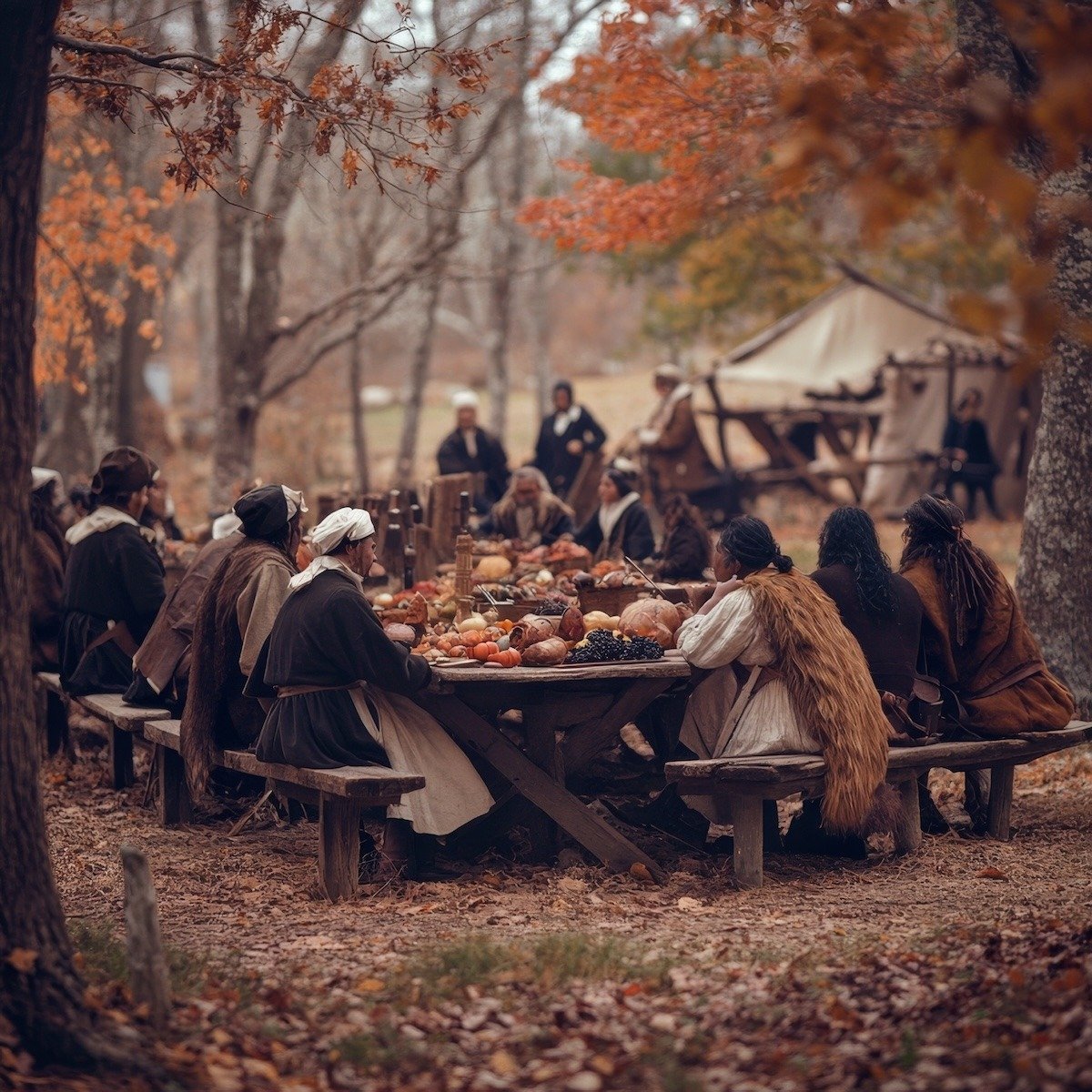

What the Pilgrims Ate at the First Thanksgiving
Thanksgiving today often features familiar staples: turkey, stuffing, cranberry sauce, and pumpkin pie. While beloved, these dishes differ significantly from those served at the Pilgrims’ Thanksgiving.
Many ingredients and flavors from 17th-century feasts would feel foreign to modern diners. The early settlers and Native Americans ate a variety of locally available foods prepared in ways that would surprise today’s holiday guests.
Dishes like eel, roasted or stewed to highlight the bounty of nearby rivers, and chestnuts, used to thicken stews or served as snacks, graced those early feasts. Boiled bread pudding—either savory or sweet—provided a hearty substance, contrasting with today’s lighter desserts.
Exploring these lesser-known foods paints a fascinating picture of early American culinary traditions, where resourcefulness and seasonality defined the menu. Reimagining the Thanksgiving table with these historic dishes reminds us of the holiday’s origins and the diverse flavors that once united communities in gratitude.
Who Were These Pilgrims?
The early 17th-century settlers commonly referred to in Thanksgiving discussions were the Pilgrims, a group of English Separatists who arrived in North America aboard the Mayflower in 1620. They established the Plymouth Colony in what is now Massachusetts.
The Pilgrims held one of the earliest Thanksgiving celebrations after their first successful harvest in 1621. They shared this celebration with the Wampanoag people, who had helped them survive their first difficult months in the New World.
Although the Pilgrims’ 1621 feast is often seen as the “first Thanksgiving,” similar harvest celebrations were common in both European and Native American cultures. Thanksgiving as a national holiday didn’t emerge until much later.
Other early settlers—such as the Puritans in Massachusetts or the settlers in Jamestown, Virginia—also held similar feasts. However, the Pilgrims’ 1621 feast most closely aligns with what is celebrated today as Thanksgiving in the United States.

What Did the Pilgrims Most Likely Dine On?
The early settlers in the 17th century likely enjoyed a diverse, regionally sourced Thanksgiving spread that included:
- Venison – Native Americans provided deer meat, a common protein source.
- Wildfowl – Settlers roasted or stewed ducks, geese, swans, and even passenger pigeons.
- Fish and Shellfish – Eels, clams, oysters, mussels, and bass sourced from nearby rivers and coastlines appeared on the table.
- Corn-based Dishes – Settlers served corn in various forms, such as samp (a type of porridge) and cornmeal mush.
- Nuts – Roasted chestnuts, walnuts, and beechnuts appeared in stews and breads.
- Pumpkin and Squash – They roasted or boiled pumpkins and squashes, sometimes sweetening them with honey or syrup.
- Root Vegetables – Turnips, carrots, parsnips, and onions added earthy flavors and bulk.
- Beans and Legumes – Beans, an essential crop, were boiled or mixed with corn in succotash.
- Boiled Bread Pudding – Made with available grains, this pudding was sometimes sweetened with molasses or honey.
- Berries and Dried Fruits – Cranberries, wild grapes, and dried fruits were used in sauces, stews, or eaten on their own.
These foods, prepared using traditional methods, showcased the seasonal and regional abundance available to early Americans.
Seasonal and Available Foods
The dishes served at early Thanksgiving celebrations differed significantly from today’s familiar holiday fare, reflecting the seasonal ingredients available to settlers and the influence of Native American culinary practices. While today’s meals often center around roasted turkey, early Thanksgiving tables featured a variety of wildfowl, such as duck, goose, or even swan. Venison, a gift from Native Americans, commonly appeared as a flavor and texture not often seen at modern feasts.
Seafood played a prominent role, with dishes like clams, mussels, oysters, and even eel sourced directly from nearby waters. In contrast, today’s seafood dishes, if included, are usually minor additions rather than main components. Corn, essential in the 17th century, often appeared as mush or porridge, unlike today’s corn casseroles and bread-based stuffing.
Root vegetables, beans, and squashes served as staples, providing hearty, rustic flavors. Early settlers prepared them simply—roasting, boiling, or stewing them. Sweetened foods were rare, though pumpkins and squashes often cooked with honey or molasses. Desserts like pumpkin pie or sweet cranberry sauce wouldn’t appear until much later; early feasts offered only modest treats like boiled bread pudding, lacking the rich pies and cakes we enjoy today.
Stuffing
Early settlers had dishes resembling stuffing, but they differed from today’s bread-based versions. Since bread wasn’t as readily available, stuffing often included locally sourced ingredients such as wild herbs, nuts, and dried fruits. Cornmeal, a dietary staple, often replaced bread, while herbs like sage and parsley, along with onions and vegetables, flavored game and wildfowl. Nuts like chestnuts or walnuts added texture and depth, and dried fruits like cranberries or wild grapes provided subtle sweetness.
These early versions of stuffing, lacking bread, butter, and common seasonings, still served the same purpose—adding flavor and moisture to roasted meats. They reflected both the settlers’ resourcefulness and the influence of Native American culinary practices, creating a hearty accompaniment suited to the ingredients of the time.
Some of My Favorite Thanksgiving Posts
Discover more from reviewer4you.com
Subscribe to get the latest posts to your email.





